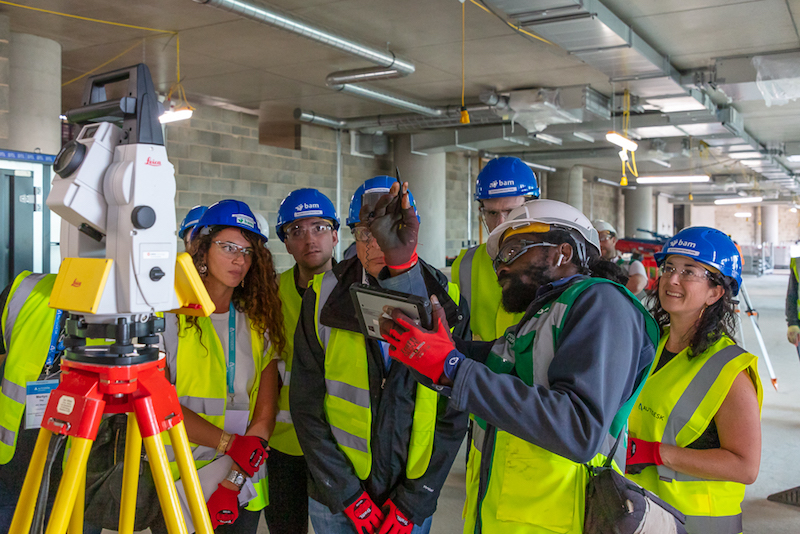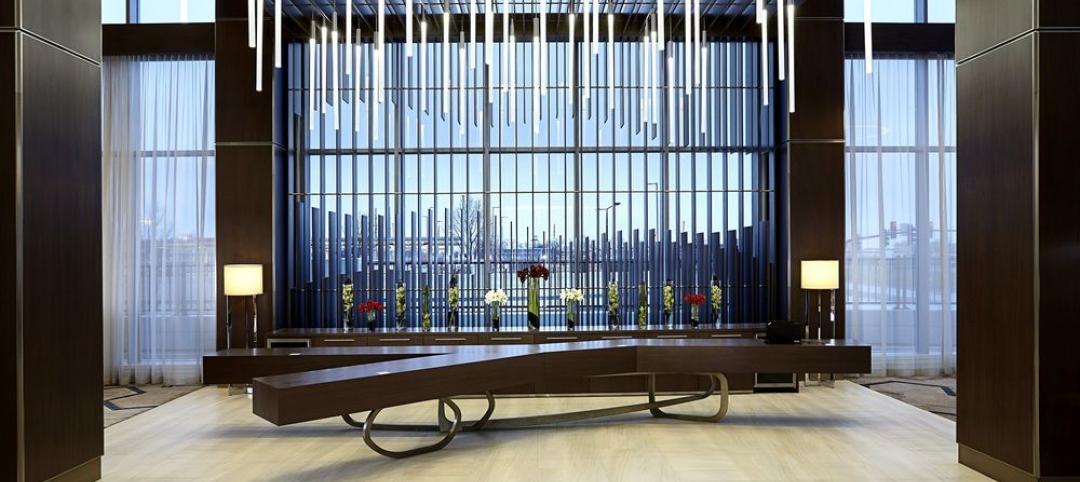Last week’s Autodesk University event in London promoted the theme “The Opportunity of Better.” And its presentations made a compelling case for technology as essential to accelerating construction productivity at a time when “more is inevitable“ but “the reality of less” exists.
That comment came from Sam Ramji, Vice President of Forge, Autodesk’s cloud developer platform, who kicked off the two-day event by describing how the United Nations turned to Microdesk, an Autodesk technology consultant, to simulate topography in order for the UN to build a city in six months above a flood plain in Bangladesh for 600,000 Rohingya refugees.
Time and again during the event, speakers (who included Autodesk execs and the company’s customers) emphasized how technology is critical for solving problems in design, engineering, and construction that had proved intractable to more conventional approaches. The biggest single problem at the moment, of course, is the scarcity of labor in the face of growing demand for more buildings across all typologies. (For example, the United Kingdom alone is going to need 10,500 new homes every month through the next 20 years to meet its anticipated population and economic growth needs.)
SEE ALSO: This is the world’s first building completely 3D printed onsite
“Construction is the No. 1 priority of this company,” said Jim Lynch, Vice President and General Manager of Autodesk Construction Solutions, during a preconference Construct & Connect Summit. “We’re trying to deliver products faster to the market.”
The three “pillars” of Autodesk’s business strategy are digitization, workflow integration, and prediction. Lynch noted that Autodesk is investing “heavily” in artificial intelligence and machine learning to help its customers make better decisions quicker. The company recently introduced Construction IQ, an AI service that works with Autodesk BIM 360 project management software to analyze project safety.
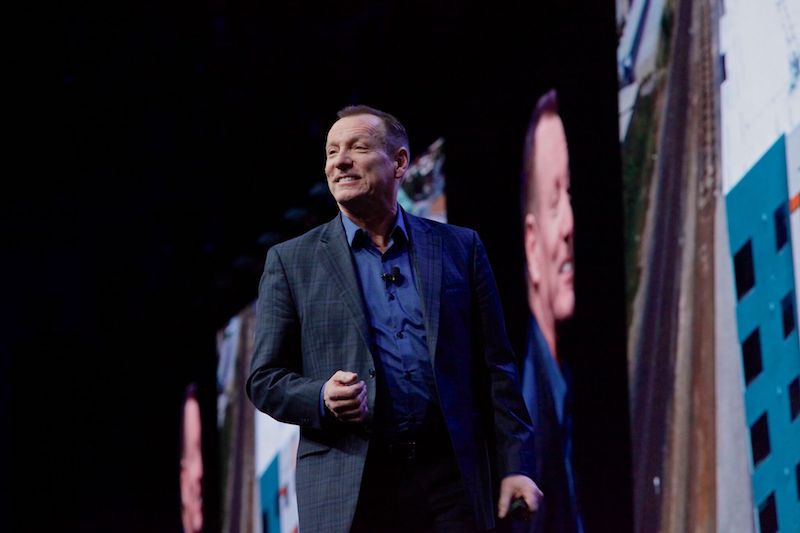
Jim Lynch, VP of Autodesk Construction Solutions, which the software giant launched last year. He said that developing tools and platforms for construction management is Autodesk's top priority. Image: Autodesk
Patricia Keaney, who heads up the Construction IQ team, said that Autodesk has accumulated 50 million construction “issues,” which it can analyze to help its client base predict potential jobsite problems that, in turn, would guide future design models. She was joined at a press conference by Michael Murphy and Simon Tritschler, Digital Construction Operations Manager and Technical Deployment Specialist for the civil engineering firm BAM Ireland, which has used Autodesk products to analyze its jobsite data for 2½ years, and has seen its projects’ quality and jobsite safety improve by 20%.
“The software allows our people in the field to prioritize a project’s issues, based on data,” explained Tritschler. BAM Ireland now digitizes 95% of its workflow, and its field workers now spend 25% more of their time attending to specific tasks and risk items. “This has been a great starting point for us, because a 1-2% risk is our profit margin,” said Tritschler. He and Murphy added that BAM Ireland’s goal is to stave off safety incidences before they happen. “The opportunities are massive,” said Murphy.
Reporters toured King’s Cross, a 1-million-sf mixed-use project that BAM’s Construction Division in London has been working on for more than a decade. BAM uses a host of Autodesk products on this project, starting with 3D point-cloud scans that serve as the basis for design that creates a digital twin using VR, AR, and 4D software. On the jobsite, QR codes help supervisors and project managers verify site inspection for protection from falling objects. Autodesk and Leica Geosystems also developed a technology that allows BAM to install mechanicals and other components by matching their positioning with laser scans that pull digital models from the cloud.
Another building within King’s Cross is Coal Drops Yard, an adaptive reuse of an old coal depository that now features shops, restaurants and offices. BAM surveyed this site for a year before it began construction, which included extensive modeling before placing eight massive roof trusses whose end nodes alone weighed 1,300 tons each. (The architect on this project was Innovative Design.) The digital “snagging” process on the project was done completely paperless using Autodesk BIM 360, which has become the “home” for this project’s data.
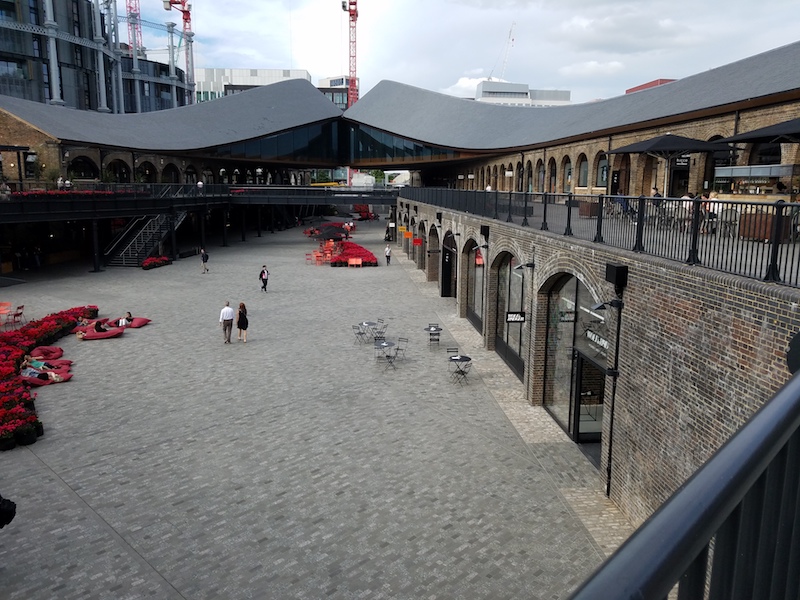
For its Coal Drops Yard adaptive reuse project, BAM surveyed the site for a year before starting construction, which included a complicated installation of a curved roof supported by eight trusses. Image: BD+C
BAM envisions creating a physical and digital phase for every project going forward, and is also moving toward prefabrication “as much as possible,” said Menno DeJonge, BAM’s Director of Digital Construction.
A new generation of building design tools
AU London 2019 generated some news about the company:
•The city of Paris recently selected the architectural firm Gustafson Porter + Bowman as the winning design team for the massive renovation of the grounds around the Eiffel Tower. The four design contestants had submitted proposals that used BIM models created by Autodesk and WSP, which were contracted last year by the city to scan the entire site.
Autodesk is now working with the French contractor association GMH and the architectural firm Art Graphique & Patrimoine (AGP) to produce BIM models for the reconstruction of Notre Dame Cathedral. Autodesk is donating its software, expertise, and financial support for this effort, said Nicolas Mangan, Autodesk Vice President of AEC Strategy.
•This fall, Autodesk will release Unity Reflect, a real-time 3D development platform that is the manifestation of an interoperability agreement between Unity and Autodesk Revit. “Designers told us that they wanted a one-click solution that enables collaboration, is customizable, and extendable,” explained Tim McDonough, a Vice President with Unity Technologies, which already creates 60% of all VR and AR content and whose software is used by more than half of the top 50 AEC firms.
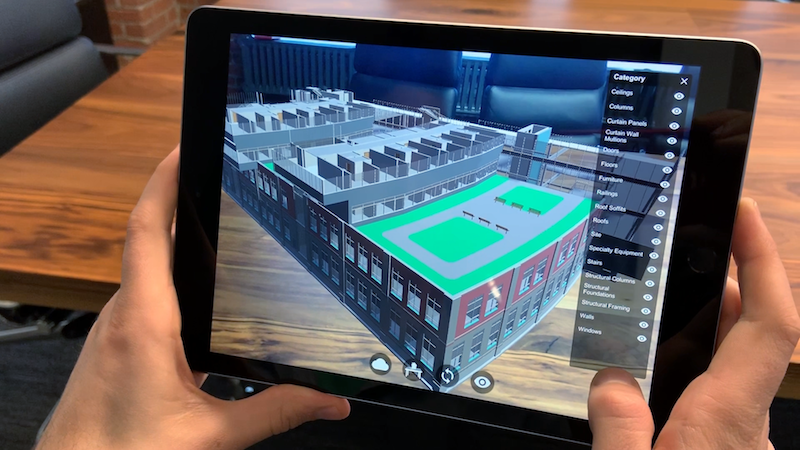
Unity Reflect provides a one-click solution to bridge 3D models with 2D drawings. Image: Autodesk
Autodesk used the second day of the event to highlight its products’ utilities. Mangan, for example, focused on Autodesk tools for connected workflows and generative design. He also talked about the intersection of BIM, the Internet of Things, and AI, and how that’s affecting trends like smarter spaces and digital twin.
Dale Sinclair, Director of AECOM’s Digital Practice, spoke of “the Fourth Industrial Revolution” that demands a “new generation of products” geared toward manufacturing and robotics. “Buildings are the only things left that are constructed instead of manufactured,” he said, calling for a shift away from one-off design and construction in favor of a mass-produced approach.
Greg Fallon, Autodesk’s Director of Manufacturing Technology, advocated as well for a greater convergence of design and manufacturing, which in his estimation is impeded currently by the fact that most software tools in use today still don’t talk to each other. “It’s a mess,” he lamented. The “future of making,” then, lies in the seamless operability of such tools as Autodesk’s Inventor and Revit.
This month, Autodesk released an add-on to its Fusion 360 product: a new cost-estimation tool combined with generative design powered by aPriori Technologies, with which Autodesk has entered into a new strategic partnership.
Related Stories
AEC Tech | Aug 24, 2017
Big Data helps space optimization, but barriers remain
Space optimization is a big issue on many university campuses, as schools face increasing financial constraints, writes Hanbury’s Jimmy Stevens.
Lighting | Aug 2, 2017
Dynamic white lighting mimics daylighting
By varying an LED luminaire’s color temperature, it is possible to mimic daylighting, to some extent, and the natural circadian rhythms that accompany it, writes DLR Group’s Sean Avery.
Office Buildings | Jul 20, 2017
SGA uses virtual design and construction technology to redevelop N.Y. building into modern offices
287 Park Avenue South is a nine-story Classical Revival building previously known as the United Charities Building.
Accelerate Live! | Jul 6, 2017
Watch all 20 Accelerate Live! talks on demand
BD+C’s inaugural AEC innovation conference, Accelerate Live! (May 11, Chicago), featured talks on machine learning, AI, gaming in construction, maker culture, and health-generating buildings.
| Jun 13, 2017
Accelerate Live! talk: Is the road to the future the path of least resistance? Sasha Reed, Bluebeam (sponsored)
Bluebeam’s Sasha Reed discusses why AEC leaders should give their teams permission to responsibly break things and create ecosystems of people, process, and technology.
| Jun 13, 2017
Accelerate Live! talk: 3D laser scanning for the project lifecycle, FARO Technologies (sponsored)
Brent Slawnikowski of FARO Technologies and Jennifer Suerth of Pepper Construction discuss how implementation of laser scanning has helped Pepper become more successful in the completion of their projects.
| Jun 13, 2017
Accelerate Live! talk: Incubating innovation through R&D and product development, Jonatan Schumacher, Thornton Tomasetti
Thornton Tomasetti’s Jonatan Schumacher presents the firm’s business model for developing, incubating, and delivering cutting-edge tools and solutions for the firm, and the greater AEC market.
| Jun 13, 2017
Accelerate Live! talk: The future of computational design, Ben Juckes, Yazdani Studio of CannonDesign
Yazdani’s Ben Juckes discusses the firm’s tech-centric culture, where scripting has become an every-project occurrence and each designer regularly works with computational tools as part of their basic toolset.
| Jun 13, 2017
Accelerate Live! talk: A case for Big Data in construction, Graham Cranston, Simpson Gumpertz & Heger
Graham Cranston shares SGH’s efforts to take hold of its project data using mathematical optimization techniques and information-rich interactive visual graphics.
| Jun 13, 2017
Accelerate Live! talk: Scaling change in a changing industry, Chris Mayer, Suffolk Construction
Suffolk’s CIO Chris Mayer talks about the firm’s framework for vetting and implementing new technologies and processes.


